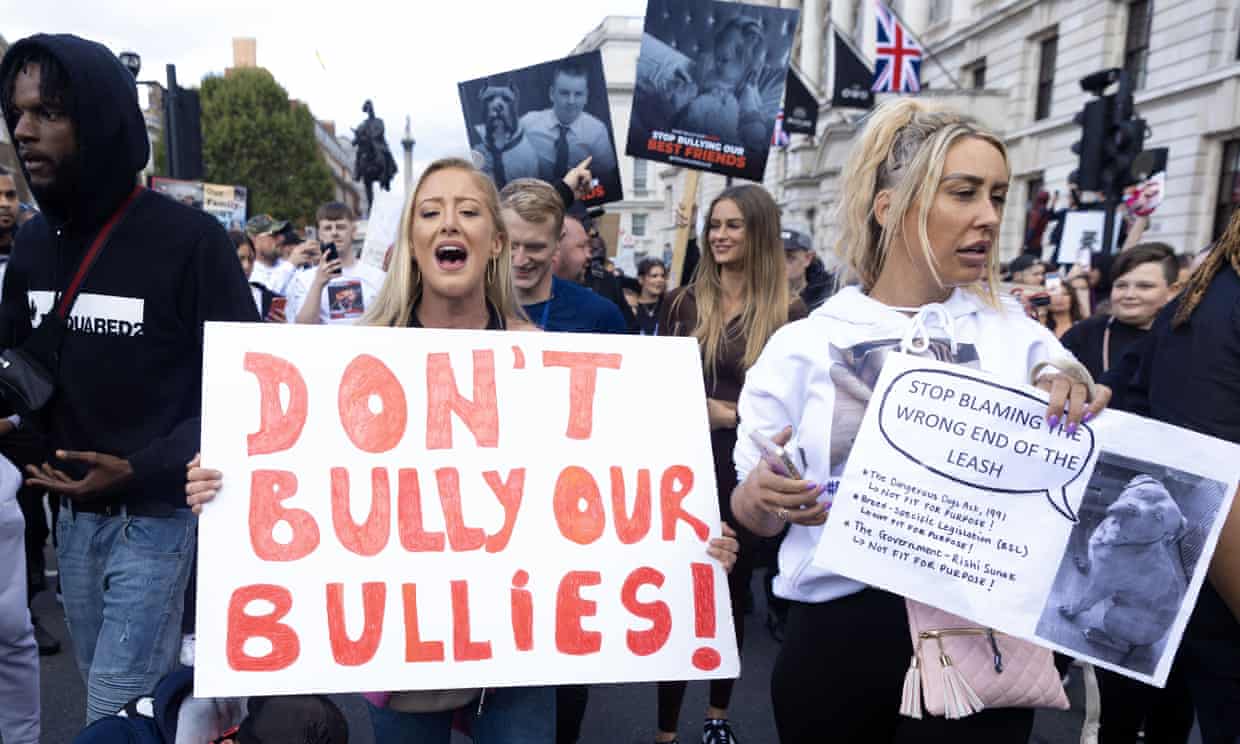
Hundreds of demonstrators have marched in central London protesting against the prime minister’s proposed ban on American XL bully dogs.
During the march on Saturday, they held placards with messages such as “don’t bully our bullies” and chanted “save our bullies”, while one person was pictured wearing a T-shirt that said, “muzzle Rishi Sunak don’t bully our breed”.
The protesting owners did not bring their dogs to the march.
Sunak announced this month that American XL bullies would be banned by the end of the year. However, owners are not expected to have let their existing pets be put down.
Meanwhile, a man has been taken to hospital after being attacked by a dog believed to be an American XL bully in south London.
The Metropolitan police said the man, in his 40s, was bitten on the arm in Pasley Park, Walworth, just after 6pm on Friday. They added that the owner left the scene with the grey-colored dog before officers arrived.
No arrests have been made in connection with the incident, but inquiries are ongoing, a spokesperson said.
Sunak announced the ban after the death of 52-year-old Ian Price, who was attacked by two suspected XL bullies in Staffordshire.
Price’s death was the latest in a series of maulings linked to the breed, with six of the 10 fatal dog attacks in the UK in 2022 attributed to XL bullies.
At least three of seven fatal dog attacks this year have been linked to the breed.
XL bullies were developed in the 1990s and are thought to have been bred from a number of breeds including the American pit bull terrier, which was banned in the UK in 1991.
Fully grown adult males can weigh more than 57kg (9st) and grow to 53cm in height.
The dogs have soared in popularity in recent years, with puppies selling for thousands of pounds.
When a breed is banned, dogs can be seized by the police and destroyed.
Owners can apply for an exemption in court if the dog is deemed not to be a danger to the public and is neutered and microchipped.
If granted, an exemption certificate can be valid for the duration of the dog’s life and often comes with strict conditions such as keeping it muzzled and taking out insurance to cover any injury or death caused by the dog.
Evidence suggests that making the breed illegal will reduce numbers but not eliminate them.
There is also concern that similar breeds could be introduced as a result of the ban, in the same way, that XL bullies have grown in popularity since the pit bull terrier was banned.